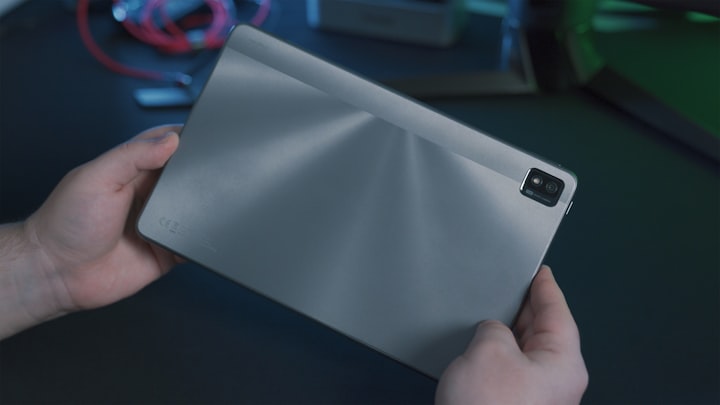Launching soon is Euclid, Europe's "dark explorer" telescope.
It has taken a complete decade to construct the Euclid telescope, costing around €1.4bn (£1.2bn).

It has taken a complete decade to construct the Euclid telescope, costing around €1.4bn (£1.2bn).
A space telescope from Europe has been launched in Florida to seek answers to one of the major scientific inquiries: the composition of the Universe.
The Euclid project aims to create an extensive three-dimensional map of the universe in an attempt to better understand the characteristics of mysterious substances known as dark matter and dark energy.
These occurrences seem to have an influence on the form and growth of all the things we observe.
The researchers admit that they have very little knowledge about them.
Direct detection of dark matter or dark energy is not possible.
Professor Isobel Hook stated that due to a significant lack of understanding, we were unable to provide a thorough explanation for our beginnings.
The astronomer from the Lancaster University in the UK believes that relying on Euclid's discoveries will be the most effective way for us to gain a deeper understanding.
"It will be similar to embarking on a voyage without knowing the locations of different lands. We will be charting the vast expanse of the Universe in an attempt to comprehend our place within it and unravel the journey from the Big Bang to the stunning galaxies, the Solar System, and ultimately life itself," she explained to BBC News.
- Galaxy's presence detected in Antarctic ice through the capturing of ethereal particles.
- Researchers observe the shockwaves produced by the collision between galaxies.
- The most detailed mapping of enigmatic dark matter revealed
At 11:12 AM local time (15:12 GMT/16:12 BST), the Euclid telescope worth €1.4 billion (£1.2 billion) was launched into space using a Falcon-9 rocket from Cape Canaveral.
Euclid has been sent to a location 1.5 million km away from Earth, positioned on the other side of the planet, opposite to the Sun.
Even though the mission is mainly led by the European Space Agency (Esa), it also benefits from substantial contributions from the United States space agency (Nasa) in terms of scientific and engineering expertise.
The presence of dark matter in a small area of the sky was mapped by the Hubble telescope.
What methods will Euclid use to explore the concealed universe?
According to previous experiments, it is believed that dark energy makes up approximately 70% of the total energy present in the Universe. Dark matter is estimated to account for around 25% of the energy, while all the observable components such as stars, gas, dust, planets, and humans make up the remaining 5%.
In order to comprehend the characteristics of the enigmatic 95%, Euclid will carry out a survey consisting of two approaches over a period of six years.
One important objective is to chart the dispersion of dark matter, which is undetectable directly but is known to exist based on its gravitational impact on visible matter.
The shape of galaxies would not stay intact without some additional support, which is believed to be dark matter, although its nature is still unknown.
The telescope is able to determine the distribution of this material by examining how its mass affects the light emitted from far-away galaxies, even though the material itself cannot be observed. This technique was demonstrated by the renowned Hubble Space Telescope when it studied a small section of the sky measuring only two square degrees.
Euclid is going to cover an area equivalent to 15,000 square degrees in the sky, which represents slightly more than one-third of the celestial sphere.
CEA
The VIS is among the biggest camera devices ever launched into outer space.
The focal point of all these efforts will be the telescope's visible camera, known as VIS, which was primarily developed in the UK.
Prof Mark Cropper from UCL's Mullard Space Science Laboratory explained that the images generated by it will be enormous, to display just a single image, you would require over 300 high-definition TVs.
Dark energy and dark matter are two distinct concepts.
Three scientists were awarded a Nobel Prize in 1998 for their discovery and understanding of a perplexing "force" that is believed to be causing the Universe to expand at an accelerating rate.
Euclid's research will involve creating a map of the spatial arrangement of galaxies in three dimensions in order to study the phenomenon.
The configurations found in the vast empty spaces separating these entities serve as a type of measuring tool to gauge the progression of expansion over time.
Once more, small portions of the sky have been observed through ground-based surveys; however, Euclid will go further by precisely determining the locations of approximately two billion galaxies that are approximately 10 billion light-years away from Earth.
Professor Bob Nichol from Surrey University suggests posing intriguing questions afterward.
"Does acceleration occur uniformly across all locations in the Universe? Currently, we tend to calculate an average from all our measurements. However, what if the acceleration varies in different places? This would be considered a significant scientific finding," he explained to BBC News.
The objects throughout the cosmos are moving away from us faster and faster.
Euclid's definitive statement about the exact nature of dark matter and dark energy may not be possible, but it will significantly reduce the range of models and theories that are currently overwhelming the field. The mission will prioritize the efforts of theorists and experimentalists, directing their attention towards more focused areas of research.
To illustrate, it could bring forth innovative ideas on how to identify the particles believed to make up a significant portion of dark matter, which have so far yielded no results.
And regarding dark energy, Euclid could inform scientists that instead of being an innate characteristic of the empty space, which is their current best assumption, this mysterious force can be better understood through a modified theory of gravity. This discovery would also fall under the realm of scientific exploration.
Prof Mark McCaughrean, Esa's senior advisor for science and exploration, suggests that dark energy could potentially be a fifth force in the Universe. This new force would only have an impact on massive scales and would not affect life on Earth.
However, it is essential to consider that this could significantly impact the outcome of our Universe - the extent of its expansion. Will it continue to accelerate endlessly, growing exponentially? Alternatively, could it eventually collapse inward?
Euclid has been granted a time frame of six years to construct its three-dimensional map of a portion equal to one-third of the entire sky.
- Florida
- European Space Agency
- The Universe






Comments
There are no comments for this story
Be the first to respond and start the conversation.